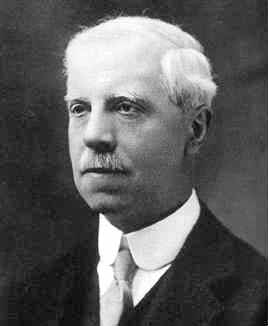


 تاريخ الرياضيات
تاريخ الرياضيات
 الرياضيات في الحضارات المختلفة
الرياضيات في الحضارات المختلفة 
 الرياضيات المتقطعة
الرياضيات المتقطعة
 الجبر
الجبر
 الهندسة
الهندسة 
 المعادلات التفاضلية و التكاملية
المعادلات التفاضلية و التكاملية 
 التحليل
التحليل
 علماء الرياضيات
علماء الرياضيات |
Read More
Date: 25-3-2017
Date: 25-3-2017
Date: 25-3-2017
|
Died: 16 March 1940 in Ashtead, Surrey, England

Thomas Heath's parents were Mary Little, from Hibaldstowe, Lincolnshire, and Samuel Heath who was a farmer from Thornton Cutris, Ulceby, Lincolnshire. Mary and Samuel had six children, three sons and three daughters. Thomas was the youngest of the three boys and he, like all the children, was musical and academically gifted. Thomas Little Heath was named after his grandfather on his mother's side, who was Thomas Little. He received a love of the classics from his father who had classics as his hobby.
After attending Caistor Grammar School and Clifton College, he went up to Trinity College Cambridge in 1879 holding a foundation scholarship. He was awarded a first class degree in both mathematics and classics. He took Part I and Part II of the Classical Tripos in 1881 and 1883, being twelfth wrangler in the Mathematical Tripos of 1882.
He took the Civil Service examination in 1884 and obtained the top mark. He became a clerk in the Treasury and was quickly promoted. He was private secretary to Sir Reginald Earle, later becoming permanent secretary. Heath was then private secretary to various financial secretaries at the Treasury up to 1907 when he was appointed Assistant secretary to the Treasury. In 1913 he was appointed as permanent secretary to the Treasury, taking control of the administrative side of the Treasury. He left the Treasury in 1919 for the National Debt Office, holding a post there until he retired in 1926. He was honoured for his work in the Civil Service by being appointed C.B. in 1903, K.C.B. in 1909, and K.C.V.O. in 1916.
Heath was [2]:-
... an admirable example of the older type of Civil servant. His courage and honesty were beyond question; his technique was perfect; but his mind was not, perhaps, sufficiently pliable or fertile in ideas to adapt itself readily to the conditions which between 1914 and 1918 had upset every kind of preconceived ideas of the desk and paper man, such as he really was.
However Heath had two separate careers, one as a civil servant, the other as one of the leading world experts on the history of mathematics. He was a specialist in the history of Greek mathematics, writing articles on 'Pappus' and 'Porisms' for Encyclopaedia Britannica while still an undergraduate. In his first year at the Treasury he wrote an essay on Diophantus and this won him a Cambridge Fellowship. Cayley recommended its publication by Cambridge University Press and Diophantus of Alexandria: a study in the history of Greek algebra appeared in 1885.
In 1896 he published Apollonius of Perga which presented the important text on conic sections using modern notation, and it contained an important preface giving details of previous Greek work on conic sections. Archimedes was published in 1897 but at this stage the important work called The Method had not been discovered, so Heath added a translation of this in an edition he brought out in 1912. In 1908 Heath's three volume work on Euclid appeared. The second edition of his translation of Euclid, brought out in 1926, has since become the standard English version of the text. Between these two editions, in 1920, he published his version of Book I of the Elements written in Greek. This was intended to encourage schools to teach directly from Book I, but it does make us realise how things have changed in British schools today - how many of today's schoolchildren could use a book written in Greek as their mathematics textbook!
Greek astronomical work also attracted Heath's attention and in 1913 he published a translation of Aristarchus' On the sizes and distances of the sun and moon again with an important preface, this time giving a thorough account of Greek astronomy. Perhaps his most famous work, however, is History of Greek Mathematics which appeared in 1921. It is a two volume work, cleverly written by partly following a chronological path, partly grouping subject areas together. A single volume version on Greek mathematics, condensing the material from his earlier work, appeared in 1931 under the title A manual of Greek mathematics and the following year he produced a companion volume Greek astronomy.
Heath was elected a Fellow of the Royal Society in 1912 and served for two terms on its council. Following the publication of History of Greek Mathematics he was elected president of the Mathematical Association for 1922-23. In 1932 he was elected a fellow of the British Academy.
One might think that having a career in the Civil Service and yet being a leading historian of mathematics would leave Heath little time for other hobbies but in fact this was not so. He was always interested in music and he had married Ada Mary Thomas in 1914, who was a professional musician, reinforcing his interest. Heath also spent time mountaineering [2]:-
... and he made most of the principal ascents in the Dolomites.
He died at Merry Hall in Ashtead, Surrey.
Articles:



|
|
|
|
دراسة يابانية لتقليل مخاطر أمراض المواليد منخفضي الوزن
|
|
|
|
|
|
|
اكتشاف أكبر مرجان في العالم قبالة سواحل جزر سليمان
|
|
|
|
|
|
|
اتحاد كليات الطب الملكية البريطانية يشيد بالمستوى العلمي لطلبة جامعة العميد وبيئتها التعليمية
|
|
|